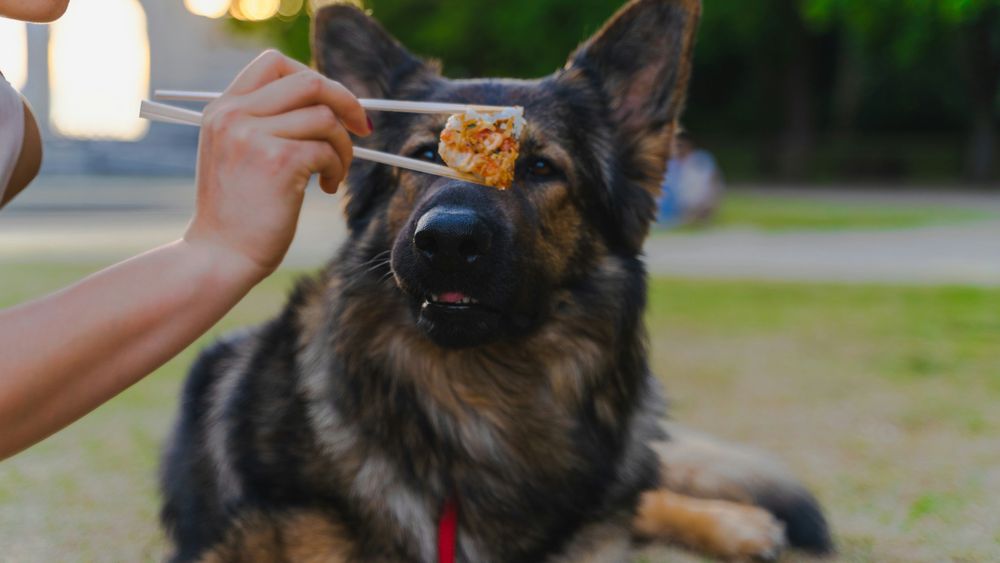/
Why You Should Never Feed Your Dog at the Dinner Table: A Simple Habit to Avoid for Peaceful Mealtime
Why You Should Never Feed Your Dog at the Dinner Table: A Simple Habit to Avoid for Peaceful Mealtime
Feeding dogs at the dinner table might feel like a small act of kindness, but it often leads to unwanted begging and behavioral issues. Understanding why this happens and how to set clear boundaries can make mealtimes more enjoyable for both pets and their owners. Here’s why avoiding this habit is important and how a consistent approach can keep dogs calm and well-behaved.
Why Avoid Feeding Your Dog at the Dinner Table?
It’s a common sight in many households—a loyal dog sitting expectantly beneath the dinner table, eyes fixed on every bite. Many dog owners, moved by their pet’s hopeful gaze, end up sharing scraps or table food. But what begins as a seemingly innocent gesture can quickly spiral into a habitual behavior that is hard to break.
Dogs are creatures of pattern and memory. Much like the old saying about cats, “if a cat sees something, it will always check there after,” dogs learn quickly from repeated experiences. When a dog receives food from the dinner table even once, they recognize that begging at mealtime is productive. They remember that persistence often pays off with tasty rewards. As a result, they will consistently return to that spot, making mealtimes less peaceful for everyone involved.
The Habit Loop of Feeding at the Table
The underlying issue is the formation of a habit loop. The dog’s action of begging is reinforced by receiving food as a reward. This turns into a positive feedback cycle. The dog learns that sitting or pawing under the table yields treats, so they do it more.
While the rewards feel great in the moment, consistently feeding your dog at the table teaches them to expect human food regularly. This expectation builds a demand for attention and reward that can be persistent and sometimes uncomfortable, especially in public or social settings.
Real-Life Experience: A Shiba Inu and Mealtime Boundaries
Take the example of a Shiba Inu owner who practices strict mealtime boundaries. Shibas are known for their alertness and sometimes insatiable appetite. This particular dog is “always hungry,” as many Shiba Inu owners can attest. However, from day one, the dog was never given food at the table.
Instead of rewarding begging, if there’s any food the owners want to share, they walk to the kitchen and place it in the dog’s bowl while the dog is otherwise occupied. This approach teaches the dog that mealtime rewards come under controlled conditions—not from the dinner table.
Although this method might seem less immediately gratifying for both dog and owner, it saves a great deal of hassle later on. The dog doesn’t associate the dinner table with treats and therefore doesn’t beg or hover. This leads to more peaceful family meals and a more well-behaved pet.
Avoiding feeding dogs at the dinner table is a simple yet powerful way to foster good behavior and boundaries. While the impulse to share food may feel rewarding, establishing clear rules about mealtime keeps dogs healthier, calmer, and more disciplined. The story of the Shiba Inu who is “always hungry” yet behaves perfectly well at dinner time illustrates that firm boundaries, combined with positive alternatives, prevent begging and create a more harmonious living environment for both dogs and their humans.
If looking to improve mealtime peace and pet behavior, remember: once the dog learns that begging works, it’s very hard to unlearn. The best approach is to never start feeding at the dinner table—and keep treats and food sharing on your terms and timing.
Benefits of Not Feeding Dogs at the Dinner Table
- Reduces Begging Behavior: Dogs will not associate mealtime with easy rewards, lowering constant begging or pawing.
- Promotes Healthy Eating Habits: Feeding solely from their bowl helps maintain a balanced diet appropriate for the dog’s nutritional needs, avoiding the risks of harmful human foods.
- Encourages Patience and Discipline: Dogs learn that patience and following house rules get them rewards in the right way.
- Eases Social Situations: A dog that doesn’t beg at the table is more welcome in multi-person or social dining environments without causing disruption.
How to Implement This Practice Effectively
- Start Early and Be Consistent: Never feed your dog at the table, not even once. Consistency is key to preventing begging habits.
- Use Positive Alternatives: When you want to share food, prepare it in advance, place it in their bowl, or give treats during other times so mealtime is not the only moment they expect rewards.
- Distract and Reward Appropriately: If your dog approaches the table during meals, redirect their attention with a toy or a command and reward them when they comply away from the table.
- Communicate Clearly with Everyone: Make sure all family members and guests understand the rule to prevent accidental feeding.
Keeping these guidelines in mind can transform everyday mealtime chaos into a calm, stress-free routine that benefits both you and your dog. It may take patience and consistency, but the peace and harmony gained during meals are well worth the effort. Your dog will appreciate the structure, and family meals will become a more relaxed and enjoyable experience for everyone.